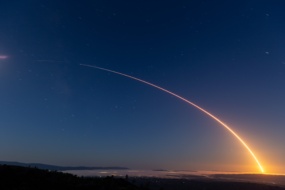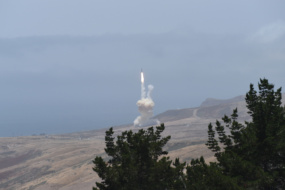By 2050, the Space Force will be a much larger military service with expanded counterspace and SDA portfolios whose operations are inextricably intertwined with the success of terrestrial military forces—at least, according to Air Force Secretary Frank Kendall’s crystal ball.
Kendall spoke yesterday about his vision for the service 25 years from now during an event at CSIS—his last think tank engagement before he steps down as the administration changes in less than a week.
How we got here: At the end of 2023, lawmakers asked Air Force leaders to peer into the future and predict what the Air Force and Space Force would look like in 2050. Kendall’s report and findings, which were due to Congress in August, are a result of that examination.
Top line: At a high level, Kendall expects that the Space Force will have grown significantly by 2050 to “several times” its end strength today of ~14,000 personnel, essentially transitioning from a merchant marines-esque force to something more resembling a professional Navy of the space domain.
“We’re going to need a much bigger, much more capable, much more powerful Space Force,” he said at CSIS.
Kendall also laid out a few specific areas where he’s predicting big changes, including:
- Establishing a mix of terrestrial and orbital weapons to counter China’s military space advancements
- Relying on commercial providers to boost the resiliency of communications
China, China, China: The outgoing Air Force secretary highlighted the threat posed by China, which is working on capabilities in space designed to increase their capability to target forces on Earth. If the US can’t deny those Chinese capabilities, including targeting data and intelligence collection, the entire military will be exposed.
“Space is going to be the decisive domain. The ability of the entire joint force to project power depends upon our success in space,” he said.
Up next: Kendall speculated about some of the greatest challenges defense officials in the second Trump administration may face, including:
- Quickly working with Congress to pass a fiscal 2025 budget—and present their plan for fiscal 2026 spending early in the year
- Finding efficiencies, the main goal of Trump’s proposed Department of Government Efficiency, which will be co-led by Elon Musk.
“People come in from industry…who have been in cases where they’ve gone into companies that needed restructuring and so on, and have done that…They do not have any understanding of what it takes to do the same sort of thing in the government,” he said.




